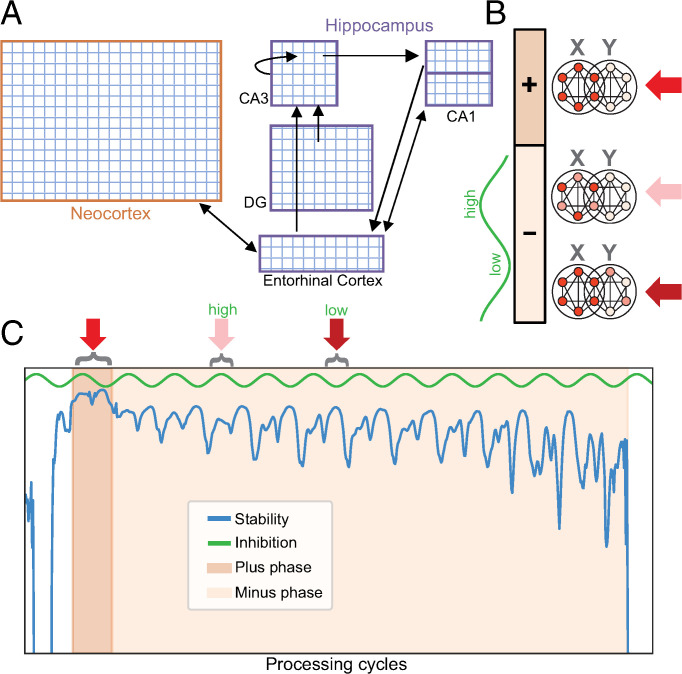Fig. 1.
Model architecture and sleep algorithm. (A) The architecture included C-HORSE (our model of the hippocampus; purple outlines), and a neocortical layer as the target of consolidation (orange outline). (B) When replaying attractor X, all units participating in the attractor have strong, stable activity during the plus phase. During the minus phase, oscillatory phases of higher inhibition lead to lower activity, with the weakest units in attractor X dropping out, and oscillatory phases of lower inhibition lead to higher activity, causing activity spreading to a nearby attractor, Y. (C) Stability trace for a real learning event, with background colors indicating the plus and minus phases. When the model first falls into an attractor, its activity is highly stable and triggers the plus phase. Short-term synaptic depression gradually destabilizes the attractor. The stability drop causes the plus phase to end, and the minus phase begins. As the attractor further destabilizes, the minus phase ends.

